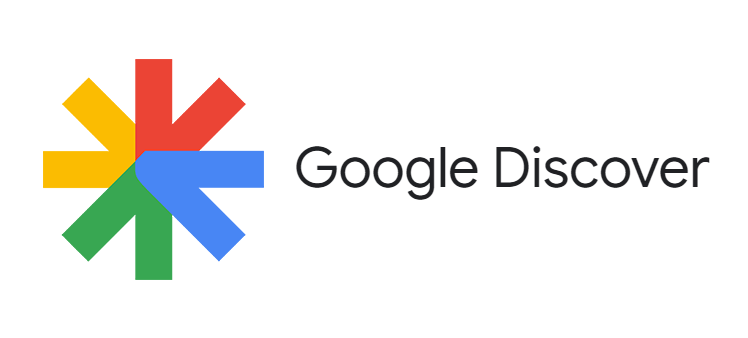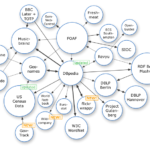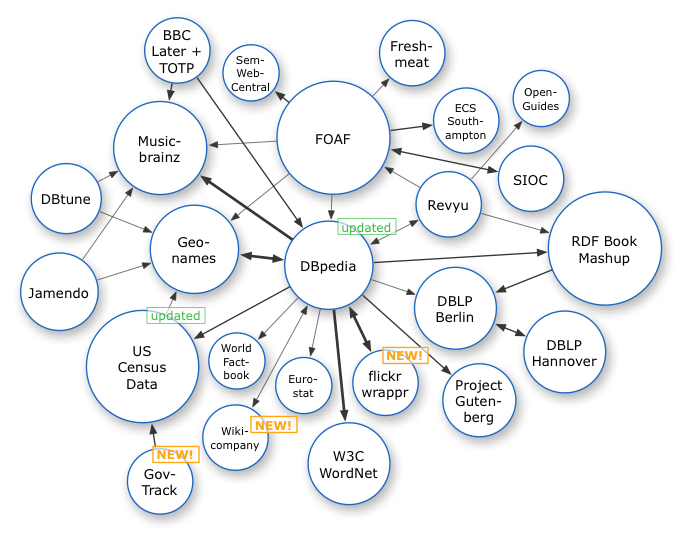Table of Contents
ToggleObtaining information has become simpler and quicker with the help of various search engines that have revolutionized the way individuals access information. One such feature introduced by Google is Google Discover. Google Discover is a personalized content feed that recommends articles, news stories, and other content to users based on their interests and search history. It was first introduced in 2017 as an evolution of Google Feed, and it is now available on the Google app, mobile browsers, and the Google homepage on mobile devices.
Google Discover uses a combination of machine learning and human editorial curation to provide users with relevant and timely content that matches their interests. It aims to help users discover new information, stay updated on topics they care about, and explore a wide range of content across the web. In this blog post, we will explore the features and benefits of Google Discover, as well as provide tips on how to optimize your content for this platform.
Key Takeaways:
- Google Discover is a content recommendation tool that uses algorithms to provide personalized news, articles, and information to users based on their browsing history and interests.
- It appears on the Google mobile app and the Google homepage, offering users a convenient way to discover new content without having to perform a specific search.
- Content creators can optimize their websites to increase visibility on Google Discover by focusing on high-quality, relevant, and evergreen content that engages users.
Understanding Google Discover
Any online user who has spent time browsing the internet knows the value of discovering personalized content that aligns with their interests. Google Discover is a content recommendation tool by Google that aims to provide users with a personalized stream of articles, news, and other content based on their search history, location, and other activities across various Google services.
Definition and Purpose
Any web user must understand that Google Discover is designed to cater to the individual preferences and interests of users by utilizing AI algorithms to curate content. The purpose of Google Discover is to present users with a continuous feed of relevant and engaging content without the need for explicit searches, offering a seamless and personalized browsing experience.
How Google Discover Differs from Traditional Search
Google Discover differs from traditional search in that it utilizes a proactive approach to content delivery, anticipating the user’s interests and needs based on their online behavior. With Google Discover, the focus is on providing a continuous stream of content without the need for user-initiated searches, thus creating a more personalized and tailored browsing experience. Discover also takes into account the user’s location and history to present the most relevant and timely content.
The Google Discover User Interface
Clearly, the user interface of Google Discover is designed to provide a seamless and intuitive experience for users. With its clean and visually appealing layout, Google Discover offers a user-friendly interface that makes it easy for users to explore personalized content based on their interests and preferences.
Layout and Design Elements
Layout and design elements in Google Discover are carefully crafted to enhance the overall user experience. The interface features a card-based layout, with each card displaying individual content recommendations. The design elements, such as images and headlines, are strategically placed to grab users’ attention and provide a visually engaging experience.
Personalization Features
Features such as topic preferences, location settings, and language selections allow users to customize their Google Discover experience. The user interface incorporates these personalization features to ensure that users are presented with content that is relevant and tailored to their individual interests and needs.
Any user can easily access personalized content and explore a wide range of topics that align with their preferences, ensuring a personalized and engaging experience.
Navigating Google Discover
Personalization is at the core of navigating Google Discover, as users can easily navigate through the interface to discover new content that aligns with their interests. The interface offers seamless navigation options, allowing users to scroll through the content and engage with articles, videos, and other recommended content effortlessly.
Plus, the interface provides users with the flexibility to bookmark and save content for later viewing, making it convenient for users to revisit their favorite discoveries at their leisure.
What is the Algorithm Behind Google Discover?
Google Discover uses a complex algorithm that takes into account a variety of factors to provide users with personalized content recommendations.
Content Ranking Factors
Any content that appears on Google Discover is ranked based on several factors, including relevance, freshness, and user engagement. Recognizing the importance of providing users with the most relevant and up-to-date content, Google’s algorithm considers the subject matter, quality, and recency of the content when determining its ranking.
- Relevance
- Freshness
- User Engagement
The Role of Machine Learning
Content on Google Discover is curated using machine learning algorithms that analyze user behavior and preferences. By understanding the content that users engage with, the algorithm can personalize recommendations to better match their interests and search history.
Learning from user interactions, the machine learning algorithm continuously adapts and improves the content recommendations, ensuring that users are presented with the most relevant and engaging content.
User Interaction Signals
Machine learning algorithms also analyze user interaction signals, such as clicks, likes, and shares, to understand user preferences and provide them with content that aligns with their interests. By analyzing these signals, Google Discover aims to personalize content recommendations and enhance the user experience.
Factors such as clicks, likes, and shares provide valuable insights into user preferences, allowing the algorithm to refine its recommendations and provide users with content that resonates with them.
Content Creators and Google Discover
With its personalized content recommendations, Google Discover has provided a new avenue for creators to showcase their work and connect with users who share similar interests.
Optimizing Content for Discover
For content creators looking to maximize their visibility on Google Discover, it is essential to understand the factors that influence content recommendations. From creating engaging and visually appealing content to utilizing relevant keywords and high-quality imagery, there are several strategies that can help optimize content for discoverability.
The Impact of Google Discover on Traffic
Creators have reported a significant increase in website traffic and engagement after their content was featured on Google Discover. The platform has proven to be a powerful tool for driving organic traffic and expanding the reach of content to new audiences.
Any content creator looking to enhance their online presence should consider the impact of Google Discover on traffic generation and audience engagement. By staying updated on best practices and trends in content optimization for Discover, creators can leverage this platform to increase their visibility and reach a broader audience.
Managing User Experience
Google Discover utilizes a sophisticated algorithm to curate content based on the user’s interests and interactions, but there are still ways to influence and control what content is presented to users.
Controlling Content Displayed
Displayed content on Google Discover can be influenced by a variety of factors, including the user’s search history, website visits, and interactions with content. By optimizing website content with relevant keywords and providing high-quality, engaging material, businesses and publishers can increase the likelihood of their content being featured on Google Discover. Additionally, utilizing structured data and metadata can provide Google with additional information about the content, improving the chances of it being surfaced to users.
User Privacy Considerations
User privacy is a paramount consideration in the management of Google Discover. Google is committed to protecting the privacy of its users and adheres to strict privacy policies. Users have the ability to control their data and personalize their experience by adjusting their settings and preferences. By respecting user privacy and providing transparency in data collection and usage, businesses and publishers can build trust with their audience and improve their presence on Google Discover.
Controlling user privacy and ensuring transparency in data collection and usage is essential in managing the user experience on Google Discover. By respecting the privacy of users and providing valuable, relevant content, businesses and publishers can establish a strong presence on the platform and connect with their target audience effectively.
Measuring Success in Google Discover
Lets explore the key metrics and indicators that can help you evaluate the performance of your content in Google Discover.
Analytics and Performance Metrics
On your journey to understanding the success of your content in Google Discover, it’s essential to pay attention to analytics and performance metrics. Keeping an eye on click-through rates, impressions, and user engagement will give you valuable insights into how well your content is resonating with audiences on Google Discover. By analyzing these metrics, you can make informed decisions about optimizing your content for better performance.
Case Studies: Success Stories and Challenges
Studies have shown that strategic content optimization for Google Discover can lead to significant increases in traffic and visibility. Here are a few case studies that illustrate the potential for success in Google Discover:
- Success Story 1: A 50% increase in organic traffic within 3 months of implementing Google Discover optimization strategies.
- Success Story 2: Doubling of click-through rates and impressions after fine-tuning content for Google Discover algorithms.
- Challenges Faced: Some content struggled to gain traction on Google Discover, highlighting the importance of ongoing optimization and refinement.
Success in Google Discover is achievable with the right approach and diligence. By leveraging analytics, performance metrics, and real-life case studies, you can gain valuable insights into how to measure and improve the success of your content in Google Discover.
Challenges and Controversies
After its launch, Google Discover faced several challenges and controversies that have sparked debates within the digital content and internet community. These challenges and controversies have raised questions about the algorithm transparency and quality control of the content displayed on Google Discover.
Algorithm Transparency Issues
On the issue of algorithm transparency, critics have raised concerns about the lack of clarity on how Google Discover’s algorithm selects and prioritizes content for individual users. This lack of transparency has led to speculation and mistrust regarding the platform’s fairness and potential biases in content distribution.
Addressing Misinformation and Quality Control
To address misinformation and maintain quality control, Google has implemented measures to combat the spread of false information and ensure the reliability of the content on Google Discover. These measures aim to promote credible sources and prioritize content that adheres to high editorial standards and quality.
This focus on addressing misinformation and quality control reflects Google’s commitment to providing users with accurate and trustworthy information, enhancing the overall user experience on Google Discover.
Conclusion
Google Discover is a personalized content recommendation feature that uses machine learning algorithms to deliver relevant and timely information to users. By analyzing the user’s search history, app usage, and location data, Google is able to curate a feed of articles, videos, and other content that aligns with the user’s interests and preferences. This platform not only provides users with convenient access to relevant content but also offers a valuable opportunity for publishers and businesses to reach a targeted audience through organic discovery.
In conclusion, Google Discover represents a significant shift in how users consume content, offering a more proactive and seamless experience. With its ability to surface diverse and engaging content based on user behavior and preferences, Google Discover has the potential to significantly impact how information is presented and consumed in the digital age.
FAQ
Q: What is Google Discover?
A: Google Discover is a personalized content recommendation tool developed by Google. It provides users with a feed of articles, videos, and other content based on their interests and search history.
Q: How does Google Discover work?
A: Google Discover uses machine learning algorithms to analyze a user’s search history, app usage, and location data to determine their interests. It then recommends content that aligns with those interests, aiming to provide a personalized and relevant experience.
Q: Can I customize my Google Discover feed?
A: Yes, users can customize their Google Discover feed by indicating their interests, hiding specific topics or sources, and providing feedback on recommended content. This helps the algorithm refine its recommendations over time.
Q: Is Google Discover the same as Google News?
A: While Google Discover and Google News both provide content recommendations, they serve different purposes. Google Discover focuses on personalized content discovery, while Google News aggregates and presents news articles from various sources.
Q: Is my privacy compromised when using Google Discover?
A: Google Discover uses data such as search history and location to personalize content recommendations, but users can control and manage their data privacy settings through their Google accounts. Google has also implemented measures to protect user privacy and data security.












